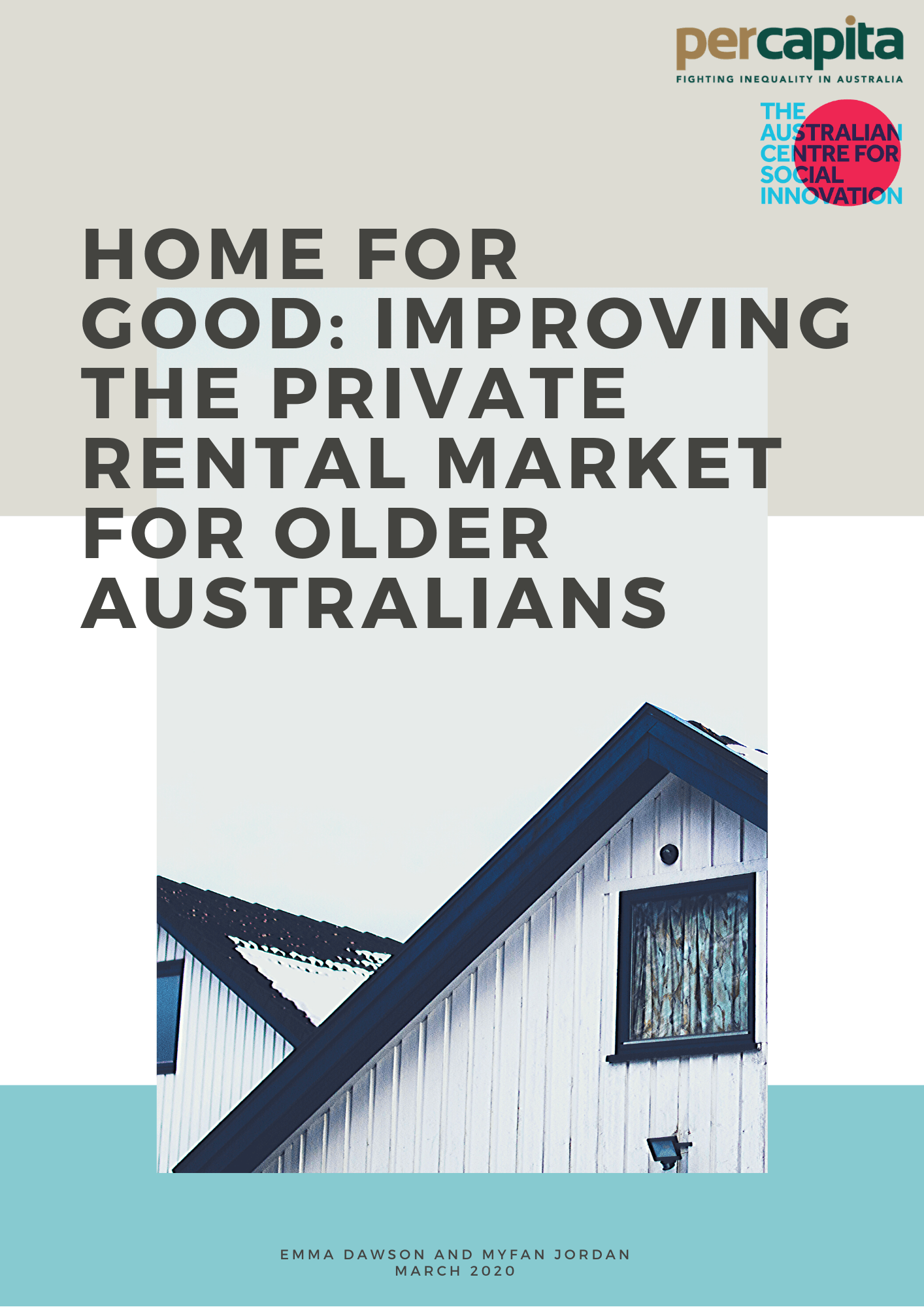This policy brief is part of our Home for Good series. You can find more about the Home for Good project here.
Introduction
Once considered a short-term housing option primarily for young adults, the private rental housing sector now accommodates 27 per cent of all households in Australia, with residents renting for much longer periods than in previous decades.
With diverse housing types covering a geographical range from urban to rural, the private rental sector can work well for the 6.3 million renters who can afford it. But for the 2.65 million Australians that qualify as low income renters, housing insecurity is a significant and growing problem.
As part of a complex housing continuum, private rental housing in Australia has changed significantly over recent decades, affected by steep increases in property values due to domestic and global policy trends.
In a cultural narrative that frames housing as a financial asset, the residential rental market is structured to incentivise investors, most of whom fall into the top three quintiles of income distribution, while largely failing tenants, most of whom are in the bottom 40 per cent of earners.
Within debates around rental housing affordability, older Australians are often characterised as “cashed-up retirees”, hell-bent on maximising their wealth through property assets. The reality is more complex.
As a demographic, older Australians hold more housing wealth than younger people, but home ownership in retirement is in decline. Australians face mortgage rates 600% higher than 30 years ago, and factors ranging from unaffordability to family breakdown are increasingly driving people into the private rental sector, particularly older single women. The surge in demand for affordable housing means one third of Australians now live in private rental accommodation, equalling rates of home ownership.
Where state-subsidised ‘public’ housing once provided a safety net, a notable withdrawal of government investment has taken place over the past two decades, leaving increasing numbers of Australians experiencing housing insecurity and vulnerable to homelessness.
While housing insecurity does not discriminate by age, it does have particular implications as we age. Understanding this, The Australian Centre for Social Innovation’s (TACSI) Future of Home initiative and Per Capita’s Centre for Applied Policy in Positive Ageing (CAPPA) are providing clarity on how the current configuration of Australia’s housing system can act as a barrier to achieving a home for good in older age.
The precariousness of private rental housing in Australia has come sharply into focus in the context of the coronavirus pandemic. In March 2020, Prime Minister Scott Morrison announced “relief can be provided for tenants…in hardship conditions…ensuring that tenancy legislation is protecting those tenants over the next six months.” This acknowledges the housing insecurity that many private tenants face every day.
This policy brief, the second in a series looking at housing options for an ageing population, draws on the work of Per Capita and TACSI, to explore and propose new and innovative pathways for housing, including private rental housing.

